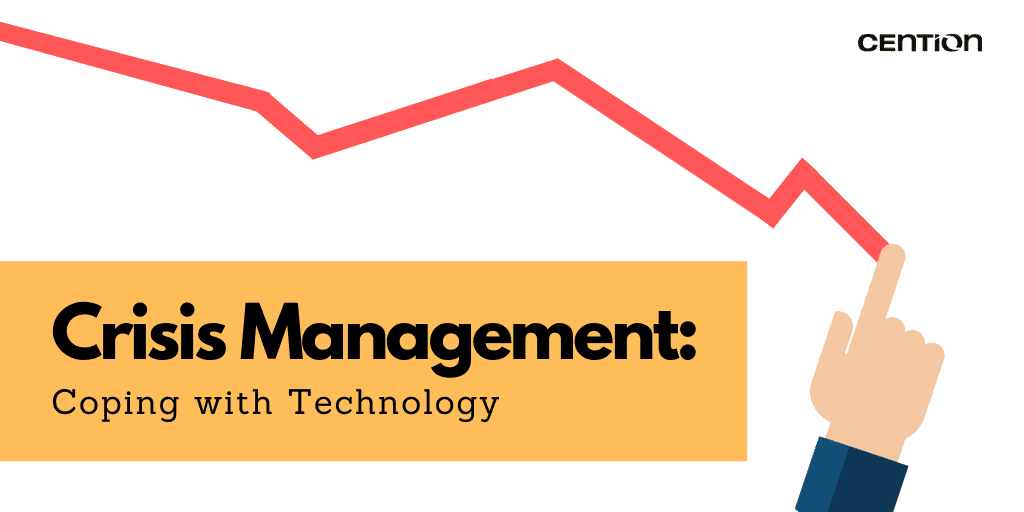What is crisis management today? It almost seems as if the past few months were simply a nightmare. It’s not. To sum it up, disaster strikes, crisis ensues, and the world was not prepared to handle the consequences. As most parts of the world entered a new unexpected age of social distancing, we are seeing businesses taking the full brunt of the pandemic outbreak.
It is something unprecedented in the modern history of our civilization. As a comparison, 25% of the working population in the US had lost their jobs during the Great Depression. Now, data from the US Department of Labor shows that more than 700,000 jobs have reportedly been closed due to the coronavirus pandemic outbreak.
It is hard to face any type of crisis head on, especially when we are terribly unprepared to do so. With every case and report of business closure and warnings of an inevitable recession, we have come to realize the importance of prioritizing crisis management. And while there are many options that can be considered, technology is one of the most effective ways in organizing preventive measures and expanding access to critical resources necessary to brace the incoming storm.
Crisis Management: Staying Connected with Technology
The recent pandemic outbreak has caused working remotely to emerge as a new trend among workers around the world. It is a move that is deemed necessary to curb the virus spread from becoming worse, despite the difficulties that comes with the decision. However, this is only possible as the technology that we possess today is capable of making the transition work as well as it did.
Businesses can help their employees to be better prepared with crisis management training through mobile apps. Plans and guidelines can be distributed through mobile platforms, while mock scenarios can be performed through video conferences. In return, both employees and businesses will be better prepared to cope with unexpected circumstances.
A secondary communication system should be seriously considered to ensure communication is always available for the people working in the front lines of any disaster or crisis. For example, the Santa Clara Fire Department experienced data throttling as their unit exceeded the use of 25GB of data during the Mendocino Complex Fire in 2018.
The horribly timed misfortune caused their phone speed to be severely slowed, making efforts to track fire resources and routing their units to quell the fire much harder. However, this could be prevented by setting up a secondary communication system such as Wireless Mesh Network. This additional system will ensure that communication will always be available during critical times.
Crisis Management: Leveraging Social Media
There are several tragedies that have proven how social media can be extremely useful during times of crises. Some countries that have been affected by the coronavirus utilize social media to provide regular updates to the general public. As information can be disseminated faster through the social platforms, governments and other responsible bodies can utilize these mediums to provide alerts, news, and updates that can help people during a crisis.
It is also important to consider which platform is used by most audiences. For instance, Twitter is an excellent tool for mass dissemination of news and critical opinions to a crisis. Professionals and government officials around the world have been using this platform to effectively reach their target audience, where approximately 74% of the users are aged between 18 to 40 years old.
Crisis is the Time for A.I to Shine
A.I is becoming one of the choices for some organizations during the pandemic period, despite being under constant criticism and target of biased concerns over privacy and security. Project Florence, a project that was launched by Sana Labs and Mount Sinai Health System in New York City is an AI-based personalized learning platform that helps improve the skills of nurses in treating Covid-19 patients.
The project was also made available for free to hospitals around the world in an effort to improve medical response during the pandemic crisis. Once a user has completed an AI-based assessment that measures their knowledge, the platform will recommend personalized contents in real time to fill in the gaps in the user’s skills.
Going Where Men Can’t Reach
Unmanned aerial vehicles (UAVs), or drones, can enhance humanitarian aid processes. In the case of a disaster, these gadgets can be used to map terrain more effectively. Damages can be assessed in real time with high-resolution mapping which gives rescuers detailed understanding of the region.
From infrastructural damages, location of stranded survivors to efficient routes for aid delivery, technology can help save more lives when employed effectively. Additionally, tools such as infrared cameras and advanced listening systems can help to detect survivors who might be buried beneath rubbles. More lives can be saved with the technology that we have even as we move forward.
Social Tracking
Certain countries such as Malaysia utilizes QR Codes to keep track of shopping mall visitors during the Movement Control Order (MCO) that has been enforced in the country since March 2020. The purpose of social tracking during the pandemic crisis is to simply detect any possible source of an outbreak.
It is not deployed to invade the general public’s privacy, but to leverage real-time information and make better, data-backed decisions. Using platforms that utilize machine learning will also boost the effectiveness of resource management and help in planning flexible emergency logistics plans.
Data Analytics for Crisis Response
From past tragedies, we have learned that disasters often create vast amounts of data including number of affected souls, geolocations of affected areas, and more. While managing this sea of information may seem like a herculean task, they can be highly effective when employed correctly. Information can be obtained to systematically manage relief efforts and improve situational awareness by allowing access to related information to the crisis for everyone.
The saying it is better to prevent than to cure means a lot more when we can understand what actually that needs to be done. Data analytics can become a starting point for organizing long-term foundations. Data from previous disasters can be analyzed to develop and test technology solutions that can help us to prepare before unexpected circumstances happen. With one step at a time, we can pave a way to reach more people and help communities to recover while developing resilience when an unforeseen crisis strikes.
Conclusion
Regardless of the scenario, all forms of organizations must be prepared to handle any kind of crisis. As famously proposed in Murphy’s Law, anything that can go wrong, will go wrong. But with proper preparations and planning, any crisis can be endured. Technology will definitely make things easier to cope with, but it is ultimately up to us to put them to good use, so that we may see the light at the end of the tunnel.
Click the link below to request a Demo:
Facebook: https://www.facebook.com/Cention
LinkedIn: https://www.linkedin.com/company/cention-ab
Instagram: https://www.instagram.com/cention.official


